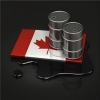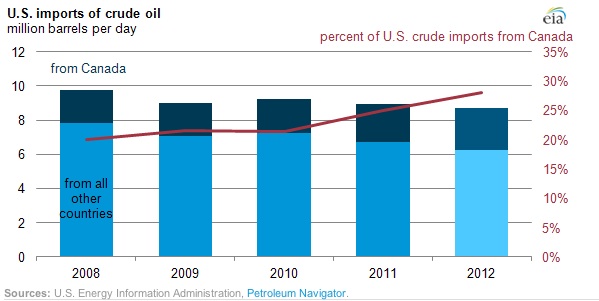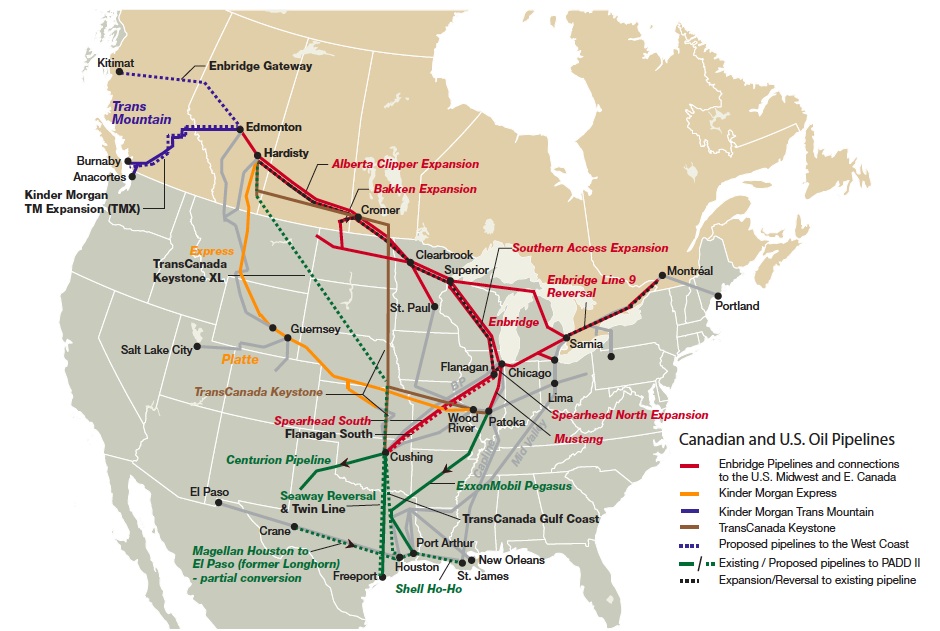RL Blogs

By Steve Pagani
Mar 01, 2013O Canada! It may not be a surprise to some, but Canada is on the verge of becoming a major player in the international crude market. But alas, the only thing holding Canada back is a few pieces of metal. |
||
| Canada’s explosion of crude oil production, already the 5th largest in the world, is on the verge of pushing Canada even high on the crude oil production ladder. Despite losing this year’s RefinerLink Super Oil Championship, RefinerLink still thinks there is a story to be told.
More importantly for Canada and the United States is the dependence each country has on the other (for better or worse). Canada’s crude oil production has grown over 3 million barrels per day and expected to top 5 million barrels per day in the near future. While at the same time the United States demand for heavy crude started to exceed it’s availability to economically acquire heavy crude. The changing dynamic of U.S. crude imports is an interesting story of changing expectations.
Canadian crude oil imports to the United States are an important part of both nations' energy balance. Canada currently exports over 90% of its crude exports to the U.S., with the U.S. growing its demand for Candian crude oil. United States demand for Canadian
refiners to demand more North American heavy crude sources. The U.S. imported more than 2.5 million barrels per day of Canadian crude in 2012.
Canadian crude oil production is great for both the U.S. and Canada, but a strange thing happened along the way. The great U.S. tight oil boom happened, consuming all the U.S. pipeline capacity. Since Canadian crudes depend on many of the same oil pipelines, a significant market inefficiency developed.
Canadian crude oil transportation inefficiency has created a massive discount for Canadian crude oil with some crude grades trading at $30 less than WTI. According to the Financial Post the Canadian government estimates this cost $27 billion dollars a year to Canada.
Despite all the excitement around Canadian crude oil production and economic opportunities, Canadian crude oil still has one unique boggie man - its reliance on viscosity dilution for successful transportation. RefinerLink has previously outlined the challenges that viscosity dilution can cause in Canadian crude oil. Despite these challenges, it’s clear that Canadian crude oil appetite will continue to grow in the U.S. as long as it can get to market.
Solving the market and transportation inefficiency is dependant on two factors. First, Canada must rely on the United States to approve the Keystone XL pipeline. And second, Canada needs to help itself by building its own pipelines to the Pacific coast of Canada.
The Canadian West Coast pipeline solution is a two-fold pipeline system built by KinderMorgan Transmountain and Enbridge Northern Gateway. With both pipeline companies chomping at the bit to “build baby build” the only thing holding things back is the Canadians themselves.
Rather than rely on the U.S. government, which is bogged down by special interests and political rhetoric, the Canadians should solve their own pipeline problems and approve pipeline construction. This would be a much better use of their governmental time than debating on how to react to a zombie apocalypse.
Despite the growing pains it looks like the future is very bright for both the Canadian oil producers and the U.S refining industry for several years to come. | ||
|
|

.jpg)









